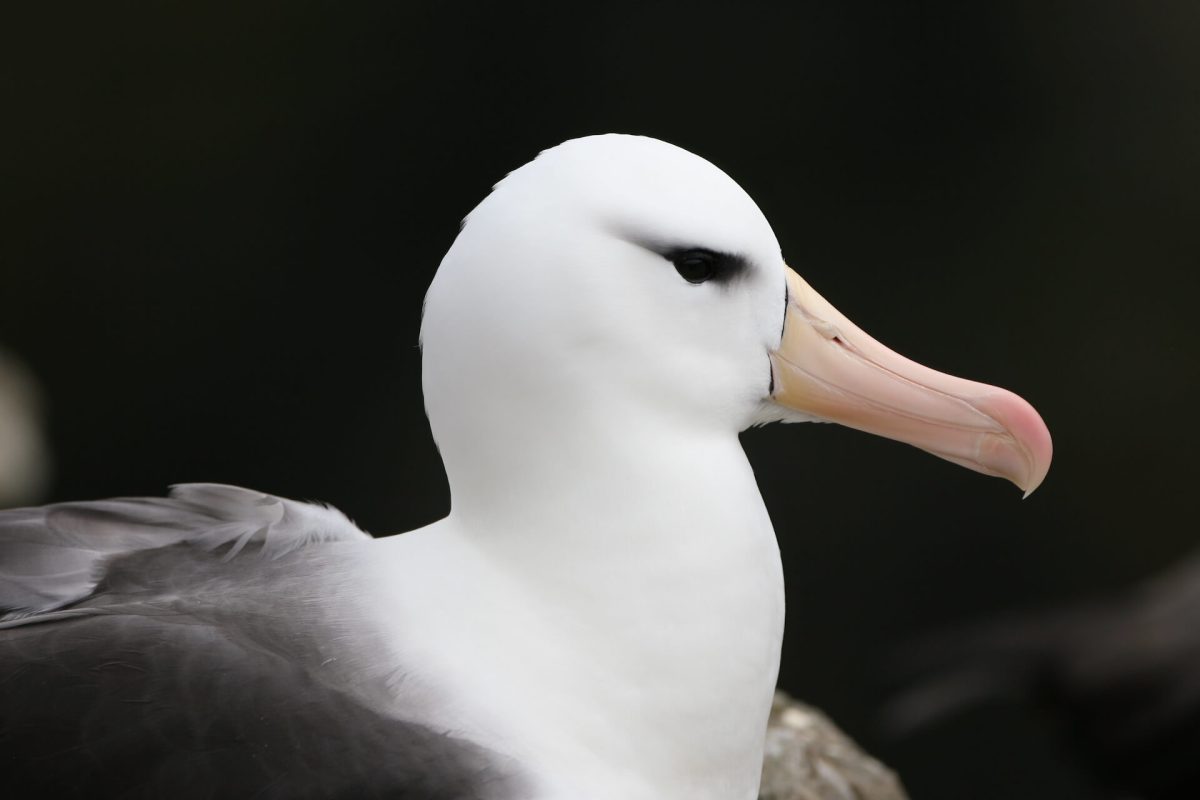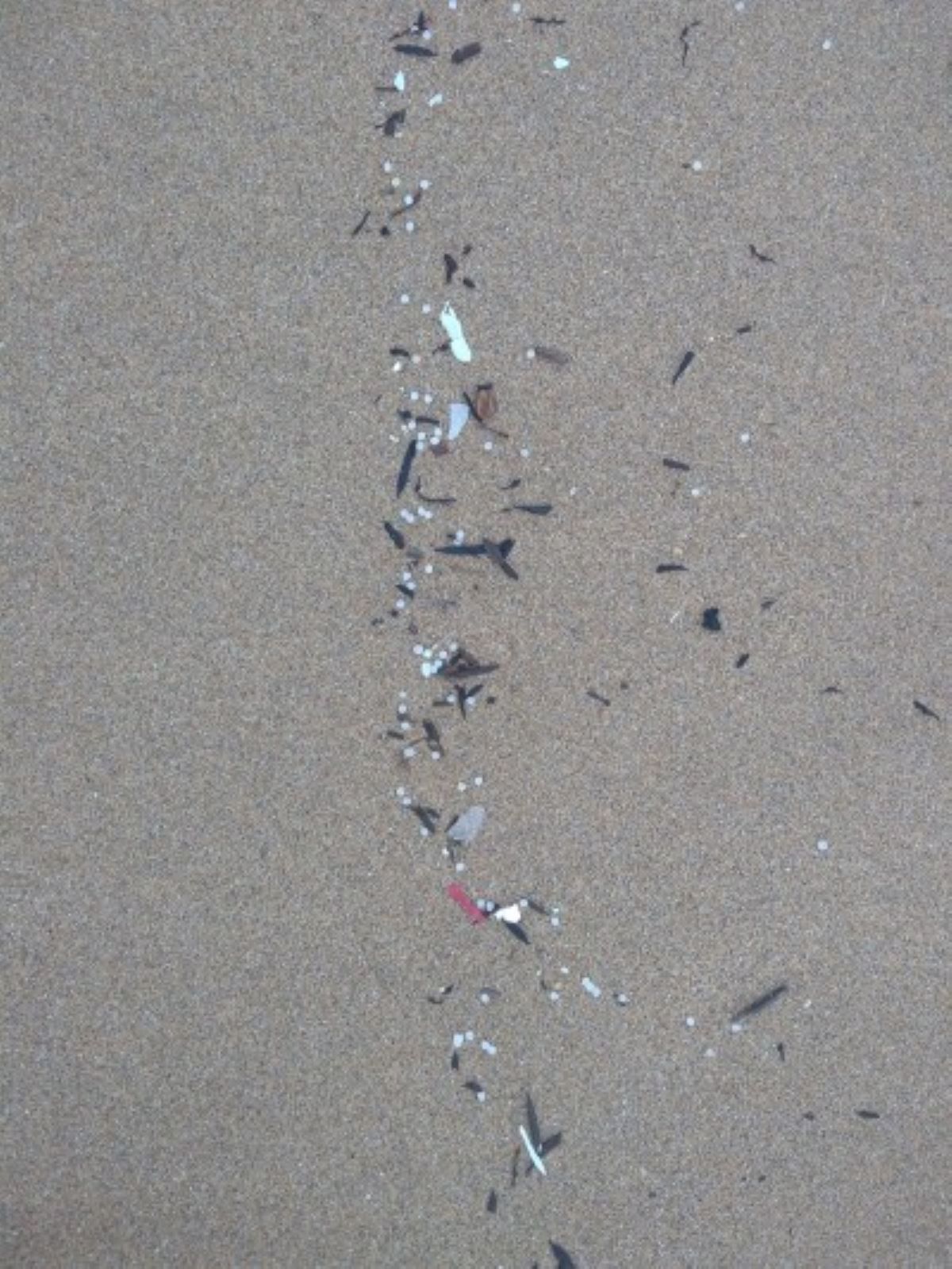 © Christine & Jean Champion
© Christine & Jean Champion
This spill can have a more significant effect on overwintering individuals that, during this period, urgently need food, increasing the likelihood of ingesting a greater quantity of these plastic pellets, as they can be mistaken for food.
The pellet spill continues to reach the Atlantic and Cantabrian coasts, forming clusters of these pellets in specific areas and dispersing along the tidal line of almost the entire northern Iberian Peninsula coast.
“Precisely, the incident occurred in an area where, almost simultaneously, its level of protection was increased under the umbrella of the Natura 2000 Network. The spill is contaminating the newly designated protected area, the Galician-Cantabrian Western Migration Corridor, a clear aggravating factor for this environmental disaster.”
As we previously emphasized the impact this spill can have on seabirds, we maintain concern about its persistence and extension. Therefore, we are in constant communication with local entities, public administrations, and environmental agents to ensure that cleanup operations and waste custody are carried out correctly, in a coordinated and responsible manner. On the one hand, to prevent a greater impact on beaches (some in highly sensitive natural areas), and on the other hand, to collect them following the necessary protocols to assist the Environmental Prosecutor’s investigation.
In this regard, we appreciate the solidarity of the population, as well as the willingness of local entities to volunteer for pellet collection on beaches. However, we caution that, given the gravity of the situation, it is more prudent to join organized collections in coordination with the authorities, call 112 if new affected areas are identified, and report stranded birds and other marine fauna findings through ICAO (Coastal Inspection of Stranded Birds) mobile app.
 © SEOBirdLife
© SEOBirdLife
One of the particularly sensitive areas is the Ornithological Reserve of Grove, the first created in Galicia and the only one including a marine environment, covering 7,534 hectares. A unique location in the Rías Baixas, managed by SEO/BirdLife, attracting over 13,000 birds of 220 different species, including residents and migratory species. There, one can find the Eurasian spoonbill, European oystercatcher, three-toed sandpiper, whimbrel, pintail and shoveler ducks, red-throated loon, and the Balearic shearwater, Europe’s most endangered marine species.
The Tip of the Iceberg
We emphasize that this spill is further evidence of a serious environmental problem affecting biodiversity. Plastic pollution is one of the common threats highlighted in the Red Book of Birds of Spain. Species affected by this threat include shearwaters, auks, crested cormorants, razorbills, gulls, and kingfishers. Damage (even mortality) from plastic pollution, whether by ingestion or entanglement in plastic structures, is becoming increasingly frequent in seabirds. Additionally, the ingestion of microplastics is on the rise (described in nearly 60% of seabirds and steadily increasing), affecting a larger number of birds from different environments, with detrimental effects on their endocrine and digestive systems, primarily.
As stated by the UN, the current planet pollution caused by plastic represents a “global crisis,” and these residues are already becoming part of the Earth’s fossil record. To the extent that plastics have given their name to a new marine microbial habitat: the “plastisphere.” Despite current initiatives and efforts to recover marine plastic, it is estimated that the quantity of these materials in the oceans ranges between 75 and 199 million tons.
Seabirds and Plastics
The impact of plastics on living beings occurs at various levels (known as “plasticosis”). Larger-sized plastics can cause entanglements in various marine organisms, affecting both invertebrates and fish, turtles, mammals, and seabirds. They can also be ingested, either directly by mistaking them for food or through prey, causing starvation and asphyxiation.
The growing problem of microplastics adds to this, either reaching the marine environment directly (as evidenced by this occasional but recurrent and habitual spill) or through the degradation of larger plastics. The impact of these microplastics is still poorly understood, but their ingestion in large quantities by filter-feeding seabirds creates a false sense of satiety that leads the animal to starvation. They can also be absorbed through the intestinal tract, causing injuries to internal tissues, while acting as “vehicles” for chemical or biological contaminants (viruses and bacteria), which easily adhere to this type of particle. A recent study published in Nature Communications, in which SEO/BirdLife participated, addressed the risk of exposure to microplastics in procellariiformes (puffins, petrels), showing that it is much higher for the most endangered species.